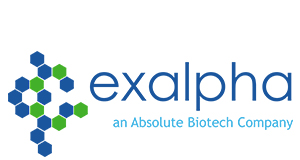Rabbit anti Human UEV1A
Rabbit anti Human UEV1A, Polyclonal, IgG
Artikelnummer
EXAX1829P
Verpackungseinheit
100 µg
Hersteller
Exalpha Biologicals Inc
Verfügbarkeit:
wird geladen...
Preis wird geladen...
Background: Ubiquitin-conjugating enzyme E2 (UEV1) was initially discovered as a protein similar in sequence and structure to the E2 ubiquitin-conjugating enzymes but lacking their enzymatic activity (1). There are at least two variants and multiple isoforms of UEV1. In particular, UEV1A (Ubiquitin-conjugating enzyme E2 variant 1 isoform A) has recently been shown to be an important component of the Toll-like receptor and IL-1R signaling pathway (reviewed in 2). Signals from these pathways are relayed by a number of downstream molecules such as MyD88 and tumor necrosis factor receptor associated factor (TRAF6), ultimately activating various kinases and transcription factors (2,3). UEV1A is part of a dimeric ubiquitin-conjugating enzyme complex also containing Ubc13 (ubiquitin-conjugating enzyme 13) that together with TRAF6 activates TAK1, a member of the mitogen-activated protein kinase kinase kinase family (4-6). The Ubc13-UEV1A complex also mediates the Lys-63 ubiquitination of TRAF-6, and this ubiquitination is essential for TAK1 activation (5).
Positive Control: Postive Control: Jurkat Cell Lysate.
UE1A is one of seven named isoforms of UEV1. UEV1A is located in the nucleus, while iosforms 3 and 5 are found in the membrane7.
Immunogen: Rabbit polyclonal UEV1A antibody was raised against a peptide corresponding to 15 amino acids near the C-terminus of human UEV1A.
Purification Method: Antigen Immunoaffiinity Purification.
Formulation: Provided as solution in phosphate buffered saline with 0.02% sodium azide.
References: 1) Sancho E, Vila MR, Sanchez-Pulido L, et al. Role of UEV-1, an inactive variant of the E2 ubiquitin-conjugating enzymes, in in vitro differentiation and cell cycle behavior of HT-29-M6 intestinal mucosecretory cells.Mol. Cell Biol. 1998; 18:576-89.
2) Akira S and Takeda K. Toll-like receptor Signalling.Nat. Rev. Immunol. 2004; 4:499-511
3) Vogel SN, Fitzgerald KA, and Fenton MJ. TLRs: differential adapter utilization by toll-like receptors mediates TLR-specific patterns of gene expression.Mol. Interv. 2003; 3:466-77
4) Deng L, Wang C, Spencer E, et al. Activation of the IκB kinase complex by TRAF6 requires a dimeric ubiquitin-conjugating enzyme complex and a unique polyubiquitin chain. Cell 2000; 103:351-61.
5) Wang C, Deng L, Hong M, et al. TAK1 is a ubiquitindependent kinase of MKK and IKK. Nature 2001; 412:346-51.
6) Yamaguchi K, Shirakabe K, Shibuya H, et al. Identification of a member of the MAPKKK family as a potential mediator of TGF-β signal transduction. Science 1995; 270:2008-11.
7) Alternative product of entry: Q13404, http://www.expasy.org/uniprot/Q13404-2, Accessed Febraury 27, 2007.
UniProt: Q13404-2.
Caution: This product is intended FOR RESEARCH USE ONLY, and FOR TESTS IN VITRO, not for use in diagnostic or therapeutic procedures involving humans or animals.
Positive Control: Postive Control: Jurkat Cell Lysate.
UE1A is one of seven named isoforms of UEV1. UEV1A is located in the nucleus, while iosforms 3 and 5 are found in the membrane7.
Immunogen: Rabbit polyclonal UEV1A antibody was raised against a peptide corresponding to 15 amino acids near the C-terminus of human UEV1A.
Purification Method: Antigen Immunoaffiinity Purification.
Formulation: Provided as solution in phosphate buffered saline with 0.02% sodium azide.
References: 1) Sancho E, Vila MR, Sanchez-Pulido L, et al. Role of UEV-1, an inactive variant of the E2 ubiquitin-conjugating enzymes, in in vitro differentiation and cell cycle behavior of HT-29-M6 intestinal mucosecretory cells.Mol. Cell Biol. 1998; 18:576-89.
2) Akira S and Takeda K. Toll-like receptor Signalling.Nat. Rev. Immunol. 2004; 4:499-511
3) Vogel SN, Fitzgerald KA, and Fenton MJ. TLRs: differential adapter utilization by toll-like receptors mediates TLR-specific patterns of gene expression.Mol. Interv. 2003; 3:466-77
4) Deng L, Wang C, Spencer E, et al. Activation of the IκB kinase complex by TRAF6 requires a dimeric ubiquitin-conjugating enzyme complex and a unique polyubiquitin chain. Cell 2000; 103:351-61.
5) Wang C, Deng L, Hong M, et al. TAK1 is a ubiquitindependent kinase of MKK and IKK. Nature 2001; 412:346-51.
6) Yamaguchi K, Shirakabe K, Shibuya H, et al. Identification of a member of the MAPKKK family as a potential mediator of TGF-β signal transduction. Science 1995; 270:2008-11.
7) Alternative product of entry: Q13404, http://www.expasy.org/uniprot/Q13404-2, Accessed Febraury 27, 2007.
UniProt: Q13404-2.
Caution: This product is intended FOR RESEARCH USE ONLY, and FOR TESTS IN VITRO, not for use in diagnostic or therapeutic procedures involving humans or animals.
| Artikelnummer | EXAX1829P |
|---|---|
| Hersteller | Exalpha Biologicals Inc |
| Hersteller Artikelnummer | X1829P |
| Green Labware | Nein |
| Verpackungseinheit | 100 µg |
| Mengeneinheit | STK |
| Reaktivität | Human, Mouse (Murine), Rat (Rattus) |
| Klonalität | Polyclonal |
| Methode | Western Blotting |
| Isotyp | IgG |
| Wirt | Rabbit |
| Produktinformation (PDF) | Download |
| MSDS (PDF) | Download |

 English
English







